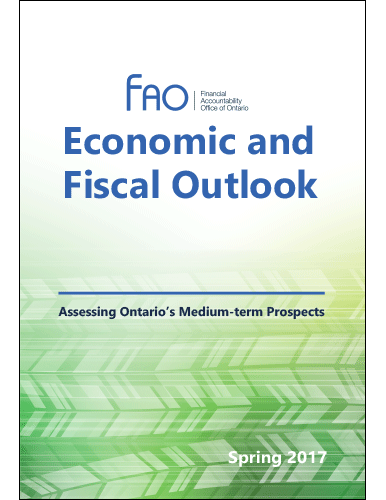Economic and Fiscal Outlook Spring 2017

This report provides the FAO’s latest economic forecast and assessment of the Province’s fiscal outlook.
Economic and Fiscal Outlook Spring 2017, Financial Accountability Office of Ontario, 2017.

